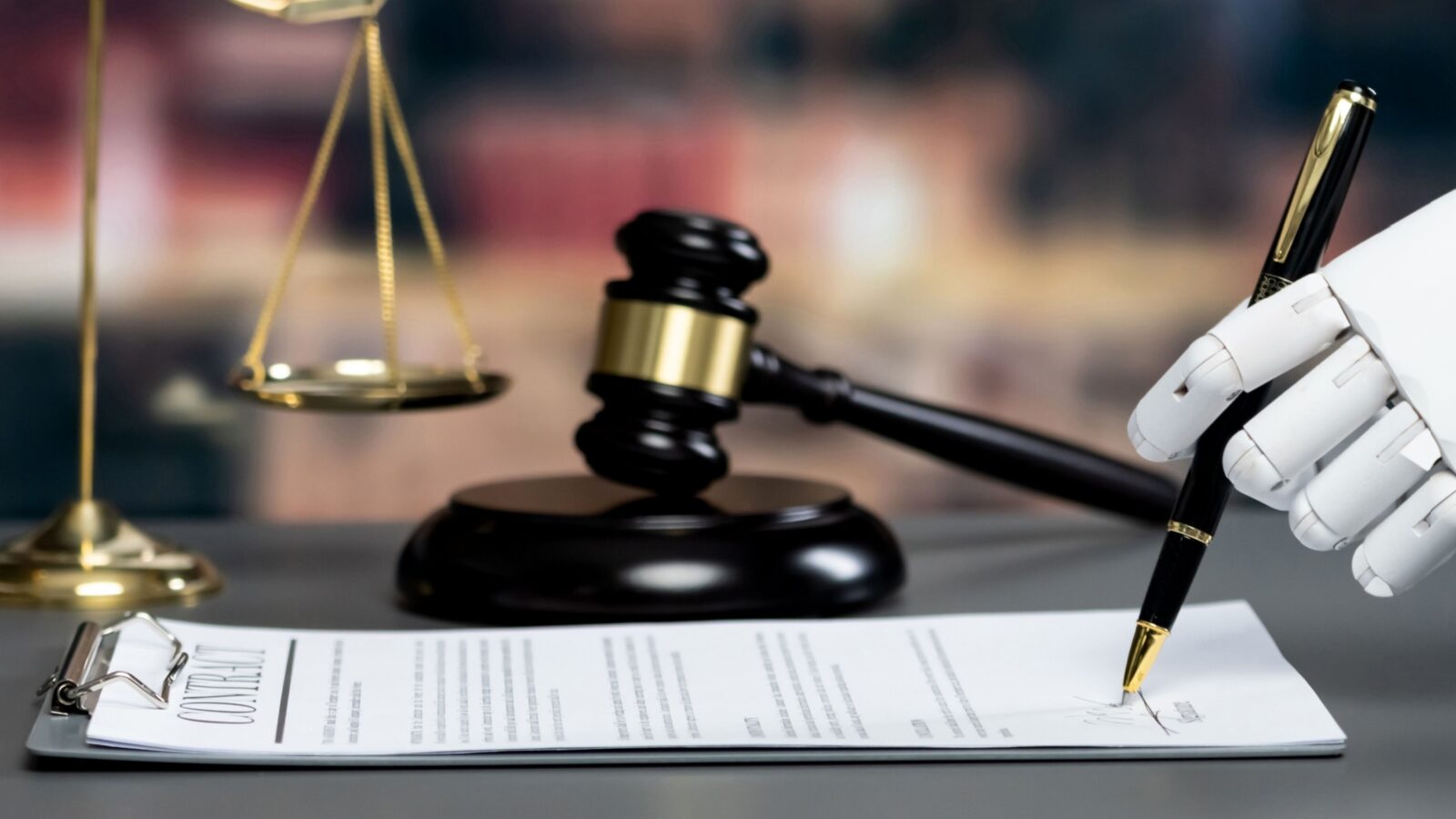Resisting Expansion of the Audio Home Recording Act in AARC v. Denso
Last week, three major technology associations¹ joined four leading public interest groups² in an amicus brief arguing against an expansive interpretation of the Audio Home Recording Act (“AHRA”) that would result in the imposition of burdensome fees and technology mandates on a wide range of products, including laptop computers and smartphones.
Background
The AHRA targets what the music industry in 1992 considered to be an existential threat: digital audio tape technology. The music industry believed that digital audio tape recorders’ ability to make perfect copies of sound recordings without degradation would result in a drastic drop in sales of recorded music. To prevent this, the AHRA required manufacturers of digital audio tape recorders to include a serial copy management system that permitted recorders to make first generation copies, but prevented them from making second generation copies. Additionally, the AHRA required manufacturers to pay a levy on each recorder and blank storage medium (e.g., CD-R) to the Copyright Office, which would turn over this revenue to the collective management organization for distribution to the record labels, music publishers, and performing artists.
The AHRA’s complex definitions were the result of extensive negotiations among stakeholders expressly intended to target the digital audio tape technology. In order to reach agreement, the negotiators specifically excluded computers from the kind of recording device that fell within the AHRA’s scope. In simplified terms, the AHRA does not apply to a device that records music onto a hard drive that also stores computer programs. Because a computer’s hard drive stores the computer programs that run on the computer, including its operating system, a computer cannot fall within the scope of the AHRA.
This case concerns multifunction entertainment and navigation systems installed in automobiles. These systems are onboard computers with the ability to record a CD onto the system’s hard drive. Notwithstanding the AHRA’s carefully drafted exclusion of computers, in 2014 the Alliance of Artists and Record Companies (“AARC”)—the collective management organization responsible for distributing the AHRA levies—sued the manufacturers of the onboard computers, as well as the automobile manufacturers, for failure to pay an AHRA levy. The district court rejected the claim, finding that onboard computers fell outside the scope of the AHRA. AARC appealed to the D.C. Circuit.
On appeal, AARC argued that the AHRA’s definitions are sufficiently elastic that a computer could fall within its scope because the hard drive could be partitioned into distinct sections, some of which contain only musical recordings and no computer programs. The manufacturers in their opposition brief explained why AARC’s “partition theory” was inconsistent with both the plain language and legislative history of the AHRA. In their amicus brief, the technology and public interest organizations made several policy arguments supporting the manufacturers’ position.
AARC’s Partition Theory Would Have an Adverse Impact on Consumers and the Computer and Consumer Electronics Industries
The amici argued that under AARC’s partition theory, every device that could store music would potentially need to comply with the AHRA’s serial copy management requirements or be subject to significant statutory damages. Compliance with the serial copy management system could impose significant performance penalties. The serial copy management system requires a device to search any data stream flowing through it for a flag indicating that the data is a first generation copy and therefore cannot by copied or disseminated. This searching could slow down the operation of certain computer functions.
Moreover, searching all incoming data for a “do not copy” flag would be incompatible with the ubiquitous encryption used to protect the privacy and security of Internet transactions. The serial copy management system required by the AHRA would not work without disabling or defeating this encryption, leaving consumers vulnerable to eavesdropping and impersonation.
Furthermore, compliance with a serial copy management system means that a computer could not make second generation copies when such copies would be lawful under the fair use right or because the underlying works were in the public domain or subject to a Creative Commons license.
In short, compliance with the serial copy management system would require manufacturers to redesign their devices in a manner that compromises their performance. Since 1992, manufacturers have understood that their products fell outside the scope of the AHRA. AARC’s partition theory would disrupt settled expectations in the computer and consumer electronics industries while harming consumers.
The AHRA’s Levy Departs from the U.S. Copyright Act’s Approach to Private Copying
In addition to forcing computer manufacturers to comply with the requirements of a serial copy management system, AARC’s partition theory would require manufacturers or importers to pay a two percent royalty on each device. Because the AHRA’s levy regime reflects a European approach to private copying that departs from the approach adopted by the U.S. Supreme Court in Sony v. Universal, amici argued that the AHRA should be construed narrowly.
The second half of the twentieth century saw the development of technologies that facilitated the making of copies by individuals on a massive scale. Copyright owners feared that this private copying would erode sales of authorized copies. The Federal Republic of Germany in 1965 adopted a levy on photocopiers to compensate copyright owners for the private copying of their works. Thereafter, other countries throughout Europe adopted similar regimes. Ultimately, the European Union’s 2001 Information Society Directive required member states to adopt a remuneration system if they permitted private copying.
In the United States, by contrast, private copying was addressed through the fair use doctrine. In 1984, the Supreme Court in Sony v. Universal ruled that a consumer’s taping of free over-the-air television broadcasts for later viewing was a fair use. The Sony decision is the basis for the lawfulness of the large number of private copies made every day by millions of Americans on their smart phones, laptops, digital video recorders, and other devices, without any remuneration to the copyright owners.
The one exception to the unremunerated private copying permitted under Sony is the AHRA. When manufacturers of digital audio tape recorders began importing their devices in the late 1980s, the record labels threatened to sue them. Although the manufacturers believed that Sony permitted the private copying by digital audio tape devices, they were concerned that litigation by the record labels could delay distribution of their devices for years. Accordingly, the manufacturers began negotiating a legislative compromise: the AHRA. When it enacted the AHRA, Congress clearly understood that it was adopting a European approach to the digital audio tape problem. The Senate report on the AHRA noted that seventeen countries—twelve of which were European—already provided “home taping royalties to creators and copyright holders for private home copying by statute.” Amici argue that the AHRA’s one-time exception to the Sony fair use rule of unremunerated private copies, agreed to under duress by the digital audio tape manufacturers, should be construed narrowly.
The AHRA Is a Much-criticized Departure from the Technological Neutrality of the Copyright Act’s Core Provisions
The AHRA targets a specific technology that never penetrated the consumer market. David Nimmer, author of Nimmer on Copyright, states that the AHRA is “the worst thing that ever happened to the Copyright Act.” It is “a forbidding jungle of arbitrary specifications” that marks “the turning point…of Title 17 from a potentially comprehensible embodiment of copyright doctrine into the hopeless mishmash it has become.” Because the need for “this radical deformation was in fact nonexistent, it is an occasion for some sadness in the annals of sensible lawmaking.”
AARC seeks to expand the scope of the AHRA—to rewrite it so that it would sweep in devices Congress clearly intended to exclude. Amici argue that the D.C. Circuit should reject AARC’s request to extend this misguided, unnecessary legislation in a manner that would do real harm to consumers and the computer and consumer electronics industry.
¹ The Computer & Communications Industry Association, the Consumer Technology Association, and the Information Technology Industry Council
² The Center for Democracy and Technology, the Electronic Frontier Foundation, R Street Institute, and Engine








